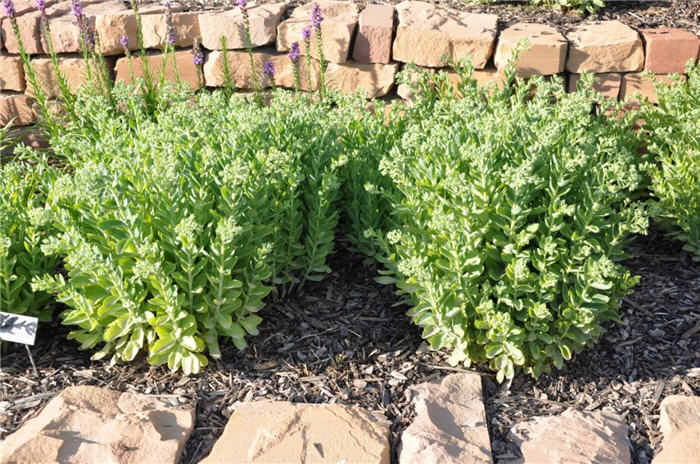| Botanical Name: Sedum 'Herbstfreude' | |
| Common Name: Autumn Joy Sedum |

-
Anatomy
-
Culture
-
Design
Plant Type
Perennial, Succulent
Height Range
1-3'
Flower Color
Pink
Flower Season
Summer, Fall
Leaf Color
Green, Grey Green
Bark Color
n/a
Fruit Color
n/a
Fruit Season
n/a
Sun
Full, Half
Water
Low
Growth Rate
Slow
Soil Type
Sandy, Clay, Loam, Rocky, Unparticular
Soil Condition
Average, Rich, Poor, Well-drained, Dry
Soil pH
Neutral
Adverse Factors
Attracts Bees
Design Styles
English Cottage, Formal, Mediterranean, Ranch, Spanish
Accenting Features
Fall Color, Showy Flowers, Unusual Foliage
Seasonal Interest
Summer, Fall
Location Uses
Perennial Border, Shrub Border, Foundation, Parking Strip, Patio, Raised Planter
Special Uses
Container, Mass Planting, Small Spaces
Attracts Wildlife
Butterflies
Information by: Stephanie Duer
Photographer:
Photographer:
-
Description
-
Notes
Autumn Joy sedum is a garden staple, and for good reason. Emerging in early spring, fleshy, green to grey-green leaves form a rosette of foliage, and soon expands on sturdy stems, growing about 18 to 24 inches tall and wide. Flower heads begin to form in early to mid summer, looking something like little cauliflower, but soon the buds open to pale pink stars that progressively deepen in color, until they become a russet red in the fall. Use in perennial, shrub, or foundation borders, in parkstrips, with ornamental grasses. Attracts butterflies and bees. Flower heads persist well into winter.
As a group, sedums prefer well-drained soils, including sandy-loam, clay-loam, or rocky soils, as long as it is well drained. In nature, most sedums occur in light shade or partly sunny sites, while a few are also well-adapted to full sun situations. They can tolerate both drought conditions or more frequent watering, but the key is good drainage. Their xeric nature makes sedums popular for use in rock gardens, roof gardens, wall gardens, and living wreaths.